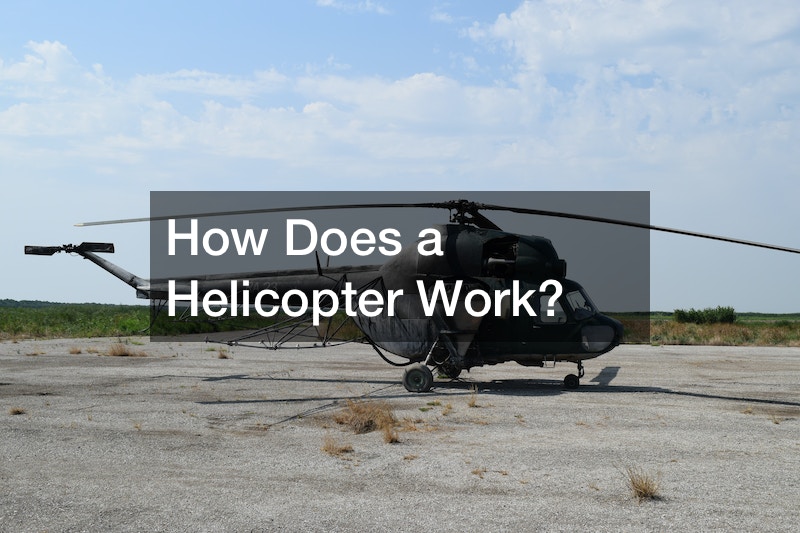How Does a Helicopter Work?


The essence of a helicopter’s flight lies in the intricate interplay of aerodynamic forces—weight, thrust, drag, and lift. Unlike airplanes, helicopters boast the ability to take off and land virtually anywhere, rendering them indispensable in military operations, medical emergencies, and civilian activities alike.
The mesmerizing choreography unfolds through the rotor blades, the unheralded protagonists of helicopter flight. These blades, uniquely contoured with a curved upper surface and flatter lower surface, leverage Bernoulli’s Principle. The accelerated airflow over the curved top creates a pressure difference, generating lift that defies gravity and facilitates hovering, precise maneuvering, and access to confined spaces.
Helicopters, adept at generating differential lift, enable nuanced steering by adjusting lift on either side, even executing rare feats like flying upside down. Although they face altitude limitations due to air density compared to airplanes, their adaptability shines in specialized tasks such as helicopter part transport, playing a vital role in ferrying components for maintenance and repairs.
In the event of engine failure, pilots leverage autorotation, using airflow for a safe descent. This capability underscores helicopters’ indispensability across diverse sectors, from serving as aerial ambulances to firefighting and military missions.
Ultimately, a helicopter’s prowess lies in the harmonious interplay of its rotor blades, transforming them from mere aircraft to dynamic airborne solutions that adeptly navigate and, in a poetic sense, beat the air into submission.
.



